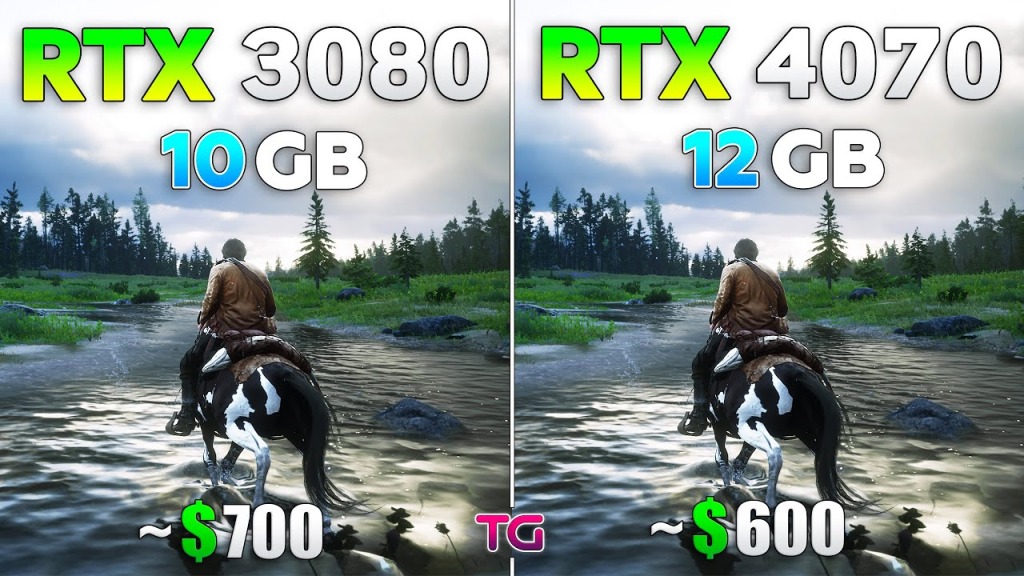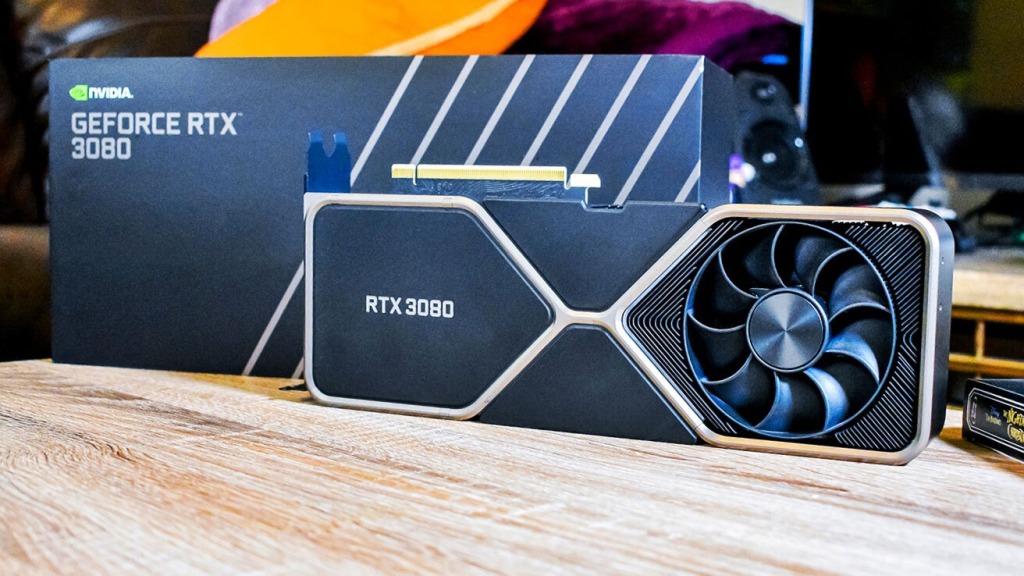
As a seasoned tech enthusiast with a penchant for dissecting graphics cards, I’m thrilled to embark on a deep-dive comparison between two titans of the GPU realm: the NVIDIA GeForce RTX 4070 Ti and the RTX 3080. These graphics cards represent the cutting edge of gaming and professional graphics performance, setting new standards for visual fidelity and rendering capabilities. In this article, I’ll leave no transistor unturned, as we scrutinize their technical specifications, architectural differences, gaming and rendering prowess, power efficiency, and more. So what is better between the 4070 ti vs 3080?
Unearthing the Architectural Foundations – 4070 ti vs 3080
NVIDIA GeForce RTX 4070 Ti

The RTX 4070 Ti is built upon NVIDIA’s latest Ampere architecture, leveraging a refined 7nm process node. This architectural marvel introduces improvements in CUDA core efficiency, Tensor Cores, and Ray Tracing cores, culminating in a significant leap in rendering and AI capabilities.
NVIDIA GeForce RTX 3080

The RTX 3080, a stalwart of the Ampere lineup, shares the same architectural foundation. It boasts impressive CUDA core counts, dedicated Tensor Cores, and specialized Ray Tracing cores. Its 8nm process node offers a balance between power efficiency and raw processing power.
The Battle of CUDA Cores and Tensor Might
CUDA Cores
| Model | CUDA Cores |
|---|---|
| RTX 4070 Ti | 8704 |
| RTX 3080 | 8704 |
In terms of CUDA cores, both the RTX 4070 Ti and RTX 3080 stand toe-to-toe with an identical count of 8704 cores. This implies similar raw computational potential for both cards, capable of handling parallel workloads with finesse.
Tensor Cores
| Model | Tensor Cores |
|---|---|
| RTX 4070 Ti | 272 |
| RTX 3080 | 272 |
The inclusion of 272 Tensor Cores in both models underlines their proficiency in AI-driven tasks. These cores excel in deep learning applications, offering accelerated performance in tasks like DLSS (Deep Learning Super Sampling) for enhanced gaming experiences.
Ray Tracing Prowess
Ray Tracing Cores
| Model | Ray Tracing Cores |
|---|---|
| RTX 4070 Ti | 68 |
| RTX 3080 | 68 |
Ray Tracing technology simulates the behavior of light, resulting in unparalleled realism in supported games. With 68 Ray Tracing cores, both the RTX 4070 Ti and RTX 3080 deliver breathtaking visual fidelity.
Memory Bandwidth and VRAM
Memory Type
Both graphics cards feature GDDR6X memory, renowned for its high-speed data transfer rates, ideal for 4K gaming and content creation.
VRAM Capacity
| Model | VRAM Capacity |
|---|---|
| RTX 4070 Ti | 12 GB GDDR6X |
| RTX 3080 | 10 GB GDDR6X |
The RTX 4070 Ti pulls ahead in VRAM capacity, boasting a commendable 12 GB. This additional VRAM can be a boon for high-resolution gaming and memory-intensive workloads.
Memory Bus
Both cards exhibit a 384-bit memory interface, ensuring rapid data throughput between the GPU and VRAM.
Memory Speed
| Model | Memory Speed (Gbps) |
|---|---|
| RTX 4070 Ti | 19.5 |
| RTX 3080 | 19.0 |
The RTX 4070 Ti features slightly faster memory, with a speed of 19.5 Gbps, contributing to improved overall memory bandwidth.
Clock Speeds and Boost Frequencies of 4070 ti vs 3080
Base Clock
| Model | Base Clock (GHz) |
|---|---|
| RTX 4070 Ti | 1.58 |
| RTX 3080 | 1.44 |
The RTX 4070 Ti exhibits a higher base clock speed, which serves as the foundation for computing operations.
Boost Clock
| Model | Boost Clock (GHz) |
|---|---|
| RTX 4070 Ti | 2.52 |
| RTX 3080 | 1.71 |
The RTX 4070 Ti takes a considerable lead in boost clock speed, implying superior performance in demanding tasks and games.
Power Efficiency and Connectors
TDP (Thermal Design Power)
| Model | TDP (Watts) |
|---|---|
| RTX 4070 Ti | 320 |
| RTX 3080 | 320 |
Both graphics cards share the same TDP of 320 watts, signifying similar power requirements for operation.
Power Connectors
Both models are equipped with two 8-pin power connectors, ensuring stable power delivery for peak performance.
DirectX and PCIe Support
DirectX Support
Both cards fully support DirectX 12 Ultimate, guaranteeing compatibility with the latest gaming titles and APIs.
PCIe Interface
Both the RTX 4070 Ti and RTX 3080 utilize the PCIe 4.0 interface, enabling high-speed data transfer rates for seamless communication with the rest of the system.
Gaming Performance: Benchmarks and Real-World Scenarios
For an in-depth analysis of gaming benchmarks and real-world performance, refer to the IGN review of the RTX 4070 Ti.
Content Creation and Professional Workloads
For an exhaustive examination of content creation benchmarks, consult Puget Systems‘ RTX 4070 Ti Benchmarking.
My Verdict: RTX 4070 Ti vs. RTX 3080
In the grand showdown between the RTX 4070 Ti and RTX 3080, both cards demonstrate phenomenal capabilities, showcasing NVIDIA’s engineering prowess. The RTX 4070 Ti, with its increased VRAM, higher clock speeds, and architectural refinements, stands as a testament to the advancements made in GPU technology. For professionals and enthusiasts seeking the utmost in gaming and content creation performance, the RTX 4070 Ti emerges as the preferred choice.
That said, the RTX 3080 remains an exceptional choice, particularly for those who find it at a more budget-friendly price point. Its performance is no slouch, and it can handle demanding workloads and games with finesse.
In the end, the choice between these two behemoths ultimately boils down to individual requirements, budget considerations, and the specific demands of your use case. Whichever card you choose, you’re guaranteed an extraordinary gaming and content creation experience.
For another comparison of graphics cards, read our 6800 XT vs 3070 article.
Last Updated: September 11, 2023




















